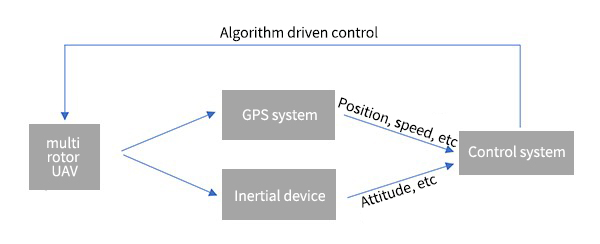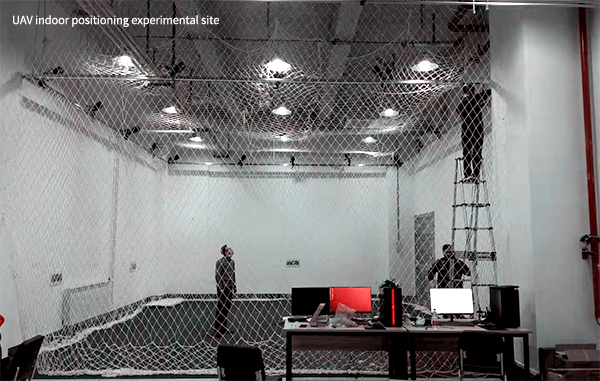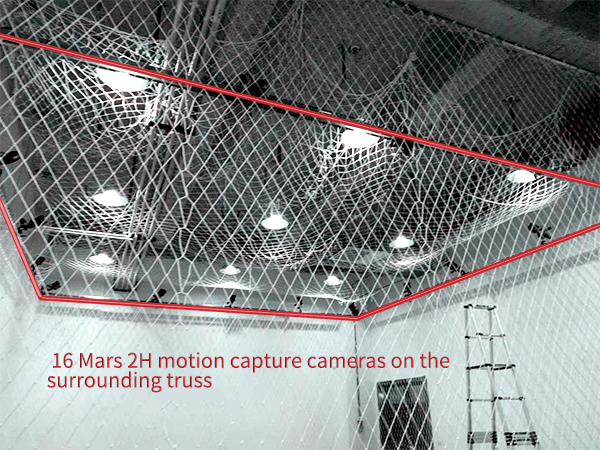Traditional UAV test system
Multi-rotor UAV has been widely used in civil and military fields because of its small size, light weight, simple structure, strong maneuverability, stable flight, easy formation and cooperative completion of specific tasks. In recent years, the research on complex control algorithms of multi-rotor UAV, such as multi-aircraft formation, multi-aircraft cooperative flight and multi-aircraft cooperative completion of specific tasks, has gradually become a research hotspot at home and abroad.

Complex missions such as multi-aircraft formation and cooperative flight of multi-rotor UAV put forward higher requirements for its control algorithm. In order to ensure the stability and reliability of multi-rotor flight control algorithm, it is necessary to test it. Therefore, it is necessary to build a convenient, efficient and reliable control algorithm test platform.
The test platform of conventional multi-rotor UAV control algorithm is shown in the following figure. GPS global positioning system provides position and velocity information for multi-rotor aircraft, and IMU on the aircraft body measures its three-axis attitude angle, angular velocity and acceleration, which are then transmitted to the control system of multi-rotor aircraft body. after being processed by flight control algorithm and route planning algorithm, the control motor is driven to realize the flight control of multi-rotor UAV.

However, such a platform has the following defects:
1) greatly influenced by environmental factors. GPS can't work indoors, so the experimental platform can only be built outdoors, which is easily affected by weather factors.
2) The positioning accuracy of the test platform is not high enough. Generally, the positioning accuracy of GPS is meters or centimeters, which cannot reach millimeters, and it is greatly affected by the test position. For example, the nearby buildings will affect the accuracy, which is not conducive to the multi-aircraft formation experiment.
Unmanned aerial vehicle indoor system based on motion capture system

Therefore, in order to solve the above problems, Dr. Liu Bo from Aviation College of Harbin Institute of Technology, based on NOKOV optical 3D motion capture system, built a multi-rotor UAV indoor test system as a test platform for its complex control algorithm, which can provide accurate position and attitude information for multi-rotors, and can also be used as a test platform for control algorithms such as single rotor and ground vehicles.


The experimental system is mainly composed of the following parts: NOKOV optical 3D motion capture system, workstation computer (running motion capture software), computer (running QT ground station) and multi-rotor UAV. Among them, NOKOV (Metric) optical 3D motion capture system includes 16 Mars 2H motion capture cameras, which can emit infrared light with specific wavelength. Markers that can reflect infrared light are placed on the UAV. After the motion capture cameras are calibrated, the spatial position coordinates of marker markers can be captured in real time, and the captured data can be transmitted to the workstation computer at the ground end in real time via Gigabit Ethernet. Seeker software running on the workstation can calculate the position information of all Marker points, as well as the six-degree-of-freedom data of the position and attitude angle of the rigid body composed of Markers, and then transmit the position and attitude information of the rigid body to QT ground station in real time through VRPN communication. The specific process is shown in the figure:

The experimental platform avoids the disadvantage that the traditional experimental platform is subject to GPS outdoor environment, and improves the positioning accuracy to sub-millimeter level, which provides a new research method for the research of multi-rotor UAV control algorithm and expands the possibility of more research in the future. As a domestic optical motion capture system, NOKOV optical 3D motion capture system has many partners in Chinese universities, which help improve the national scientific research level.